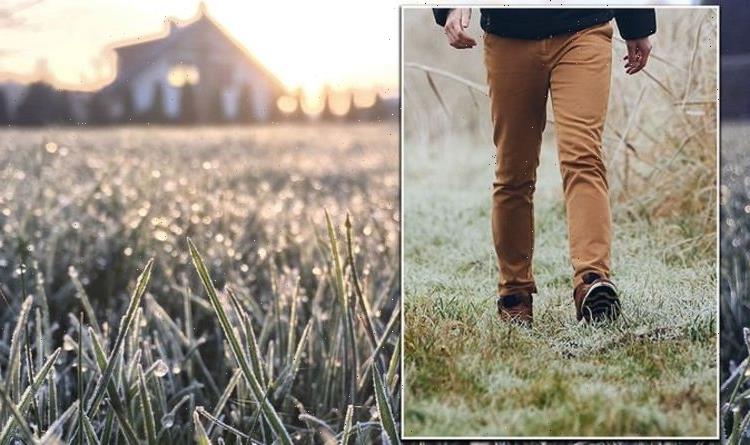Alan Titchmarsh outlines how to fix grass patches
We use your sign-up to provide content in ways you’ve consented to and to improve our understanding of you. This may include adverts from us and 3rd parties based on our understanding. You can unsubscribe at any time. More info
During the winter months, most gardeners find themselves focussing on preventative measures rather than planting. Your lawn may well make up the bulk of your horticultural haven, but experts warn it can be “damaged” by something as simple as walking on it.
Many seasoned gardeners know they should avoid cutting their grass when the thermometer drops, but the cold weather can also make grass too weak for holding any pressure at all.
This is particularly true if you travel the same path through your garden to and from your shed, back door or wheelie bin storage.
Once frost and snow make an appearance, traversing on the freezing grass blades can cause them to compact.
Compaction happens when the surface of your lawn and the top layer of soil begins to harden as a result of a heavy impact – most often from footsteps.

Unfortunately, even something as small as your dog’s paws could cause such an occurrence.
Over time, this can damage the tops of the grass plants, making it difficult for them to revive come spring.
According to experts from Spring Green, this may also lead to conditions ideal for a fungal disease known as “snow mould”.
The experts add: “Unlike in the warm months, when grass is elastic, trekking across frost-covered grass will break the plants and slow their recovery in the spring.”
DON’T MISS
‘Absolutely gleaming’ Mrs Hinch fans share easy 14p tip [COMMENT]
Peace lilies: ‘Huge mistake’ houseplant owners can make [WANING]
How to tell if your lawn is dead or dormant in winter [INSIGHT]
One of the best ways to avoid grass compaction is by putting preventative measures in place.
Experts from The Grass People recommend ensuring your lawn is well aerated.
They state: “Our cold UK weather causes the lawns surface to harden much quicker, but shouldn’t cause any lasting damage if it is correctly aerated.”
However, the best practice is simply to keep foot traffic off your grass turf.

How to aerate your lawn for winter
Lawn aeration is typically done in winter and spring and is the process of removing a build-up of lawn thatch so that your grass can breathe.
Thatch build-up begins when turf produces organic debris faster than it can be broken down.
The process of lawn aeration can be as easy as poking holes in the soil here and there.
Get the latest three-day weather forecast where you live. Find out by adding your postcode or visit InYourArea
In some cases, this can be done with household items such as a fork.
However, more severe cases may need the use of a professional lawn aerator.
Before aerating your lawn, ensure you are not doing so in extreme wet or dry conditions.
Then, firmly spike the surface down to around 30mm.
Move the fork back and forward a little then pull out.
This will create cracks or small holes in the soil allowing air in.
Source: Read Full Article
